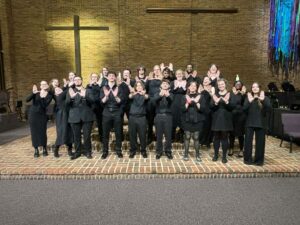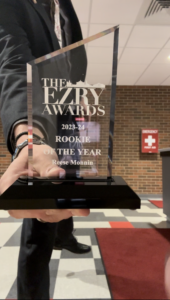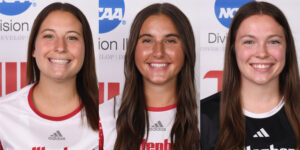On Nov. 4, Sas Carey, founder and director of the Vermont-based non-profit organization Nomadicare, presented to students and faculty at Wittenberg. Cosponsored by many departments, including East Asian studies, economics, and international studies, Carey’s talk covered her work in Mongolia to “harmonize traditional and modern medicine” and “document nomadic ways.”
She introduced Mongolia as a country whose land mass would reach from the East Coast of the United States to Colorado, and is called home by 3 million people. For comparison, she offered the fact that there are 8 million people living in New York City alone.
Carey shared photos and stories from her travels and work. She pointed out that the nomadic groups have a 99 percent literacy rate, which does not generally fit the stereotype people have for “nomads living in teepees.”
Part of her work was with the reindeer herder nomad groups who live in the northern parts of the country. Reindeer are domesticated caribou, and they are used for milk and milk products, and also transportation and riding.
Casey works to bring Western medicine from her education as a nurse harmoniously into the practices by the shamans and Mongolian doctors, whose practices she has also studied. Much of tourists’ interaction with the nomadic groups involves bringing candy for the children when the visitors visit the families. She explained that the kids living closer to the big tourism cities had teeth in worse condition, as an effect. Carey works to educate tourists on the problems caused by the candy-giving practice, to suggest alternatives, and also to educate and provide resources for the dental hygiene of the nomad children. Dental problems were among one of the main health problems Carey has worked to document in a health database, others include high blood pressure and general aches and pains.
More information about Carey’s work, books, films, and teachings can be found at www.lifenergyheal.com/
She introduced Mongolia as a country whose land mass would reach from the East Coast of the United States to Colorado, and is called home by 3 million people. For comparison, she offered the fact that there are 8 million people living in New York City alone.
Carey shared photos and stories from her travels and work. She pointed out that the nomadic groups have a 99 percent literacy rate, which does not generally fit the stereotype people have for “nomads living in teepees.”
Part of her work was with the reindeer herder nomad groups who live in the northern parts of the country. Reindeer are domesticated caribou, and they are used for milk and milk products, and also transportation and riding.
Casey works to bring Western medicine from her education as a nurse harmoniously into the practices by the shamans and Mongolian doctors, whose practices she has also studied. Much of tourists’ interaction with the nomadic groups involves bringing candy for the children when the visitors visit the families. She explained that the kids living closer to the big tourism cities had teeth in worse condition, as an effect. Carey works to educate tourists on the problems caused by the candy-giving practice, to suggest alternatives, and also to educate and provide resources for the dental hygiene of the nomad children. Dental problems were among one of the main health problems Carey has worked to document in a health database, others include high blood pressure and general aches and pains.
More information about Carey’s work, books, films, and teachings can be found at www.lifenergyheal.com/







